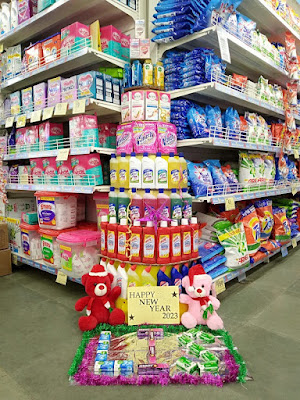Doing a Complete Retail Audit. Quick Guide!
Data are used in a shop audit to evaluate the condition of your retail space. Retailers, employees, or a third party prowl through your store or pop-up shop to gather data on what's effective and what's selling (or not).
Revenue can be used as the primary success metric. Still, when you conduct routine store audits, you can access a wealth of additional analytics to obtain a complete picture of your store's health.
You can learn more about: by conducting a store audit.
- The volume of sales.
- Stock levels (both shelf-stable inventory and back-stock).
- Faulty goods.
- Assessments of in-store displays and visual merchandising.
- A summary of what your competitors are doing.
- Consider your pricing approach.
- Product placement inside the store.
Additionally, deciding on the audit type that best meets your requirements would be best. The list includes some of the most typical store audits:
Market analysis:
Ask customers about their perceptions of your brand.
Observe how people interact with your establishment.
Looking for competitors and getting inspired.
Merchandising audit: This kind of report gathers all the information about your inventory. The impact of your current visual merchandising, product promotions, product pricing effectiveness, stock levels, and product display should all be highlighted.
Loss prevention audit: A plan to prevent any effective? What products are stolen the most? Where are they stocked in your store? What strategies are working and which aren't?
The frequency will vary depending on the type of store audit you perform and your goals.
Conduct a quick spot check once a month or a more thorough audit every three months. After weighing your options, create a strategy based on your business needs and available resources.
What various retail audits are there?
The four most common types of retail audits are:
- Analyses of loss prevention.
- Competitive evaluation.
- A review of the merchandise.
- Audit of health and safety.
Utilize a single back office to manage inventory.
You can use specific tools to manage your warehouse and keep your inventory in one place. Demand forecasting, low stock alerts, purchase order creation, knowing which products move or remain on the shelves, inventory counting, and more.
An email address.
Please enter your email address.
The significance of store audits.
Your business operations change along with the retail market. While conducting store audits may seem like a dated method of monitoring your processes, it's crucial to do so as your sales channels expand and become more intricate.
A key element of retail operations is the store audit. Store experience has become more crucial than ever as retailers implement omnichannel retail strategies and click-and-collect matures. Field teams are responsible for ensuring a superior customer experience.
Up-to-date, precise stock numbers are necessary to maintain enough inventory to satisfy your in-store requirements and any other channels you support. Store audits are one way to ensure customers walk through your stores with the best possible display experience. Having enough stock in-store and having shelves set up and displayed correctly can lead to a good shopping experience.
Shop audits are a fantastic way to train your retail staff and sales representatives. Using the audit as a learning opportunity to collaborate with their staff to improve the company by using the audit results for purposes other than merely monitoring numbers.
Using these personalized templates, you can quickly and easily calculate your company's cost of goods sold, sell-through rate, inventory turnover, safety stock, economic order quantity, or reorder point. (No math required!).
The Advantages of a Shop Audit
Here are some outcomes, in addition to educating your staff about the day-to-day operations of your business.
- Spotting and fixing visual merchandising and brand compliance inconsistencies.
- Identifying operational and maintenance issues.
- Completing the task management and unfinished duties loop.
- In-store processes and procedures are being created and implemented.
- Supplying a framework to assess team performance, retail KPIs, and financial metrics.
- Improve your relationships with your stores' staff members because they are your most valuable resource.
- Encourage healthy competition among your stores.



Comments
Post a Comment